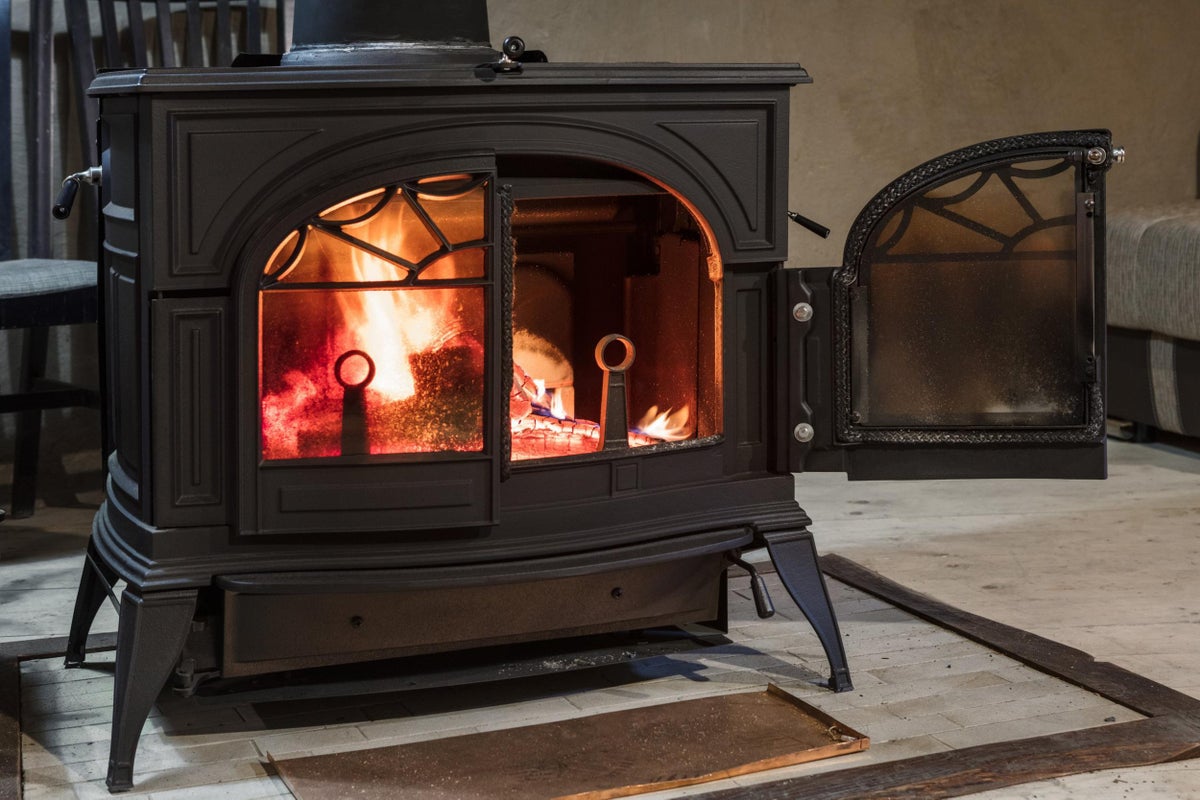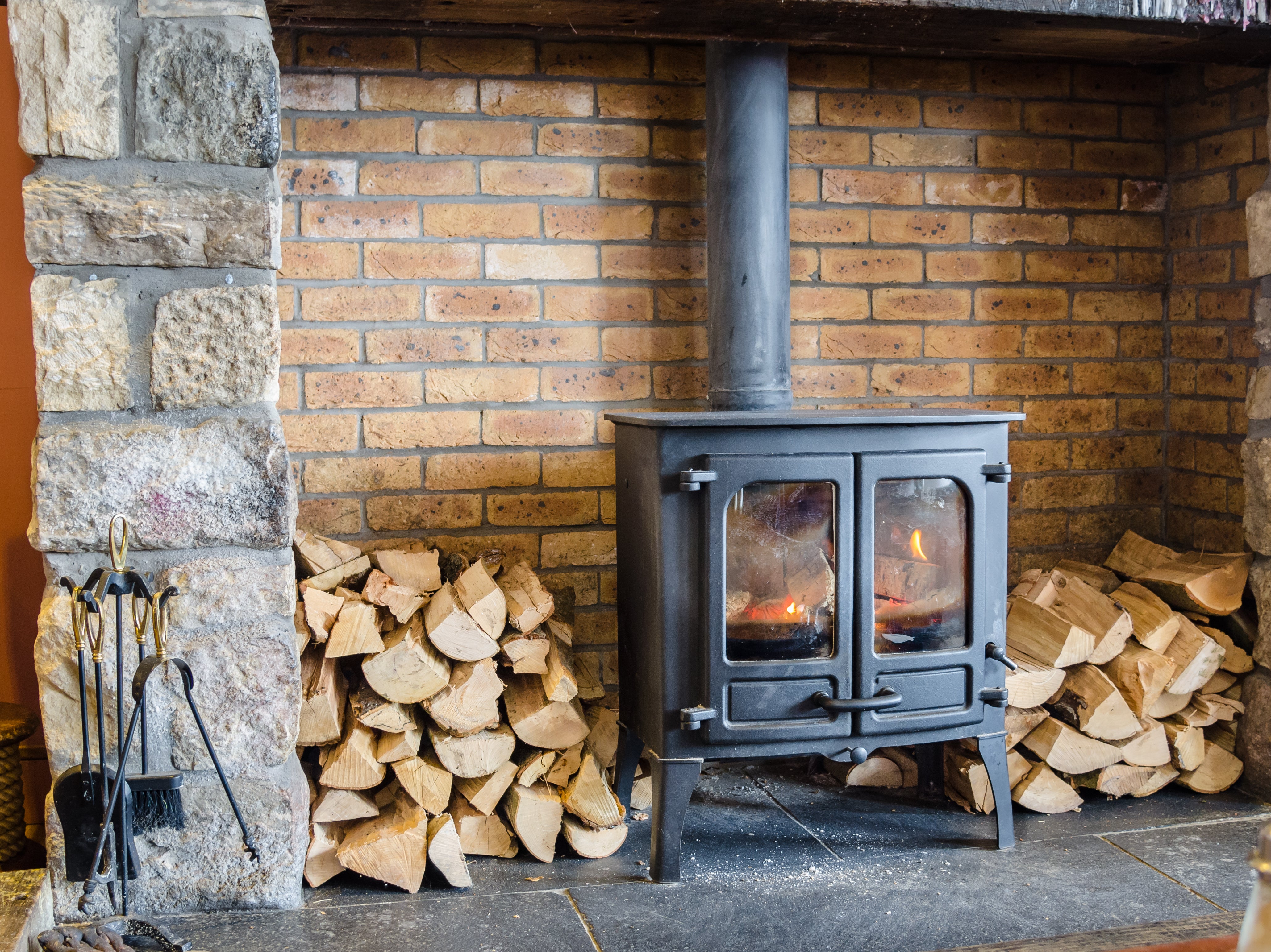
Burning wood and coal in homes contributes to about 2,500 deaths a year, a report has found.
Open fires and wood burning stoves are one of the biggest sources of small pollution particles. This fine particulate matter (PM2.5) can penetrate deep into the lungs and bloodstream and affect every organ in the body.
In the UK, people spend about 80 to 90 per cent of their time indoors and the World Health Organization (WHO) linked 154,000 deaths in Europe to household air pollution in 2019.
Toxic air pollution has also been linked to 3,700 cases of diabetes and 1,500 cases of asthma a year, according to the report.
But stopping unnecessary indoor burning could save the NHS more than £54m a year, analysis by Ricardo, a leading environmental consultancy, revealed.

“Domestic burning releases fine pollution particles that can be absorbed through the lungs and bloodstream, leading to or exacerbating health issues including asthma, lung cancer, diabetes, and stroke – among others,” Guy Hitchcock, air quality technical director said.
“This directly affects individuals in houses where burning takes place, but also neighbours and communities. From an economic perspective, these health issues cost the NHS millions every year and take up significant resources. Not only would reducing domestic burning improve public health, but it would reduce economic losses from time off work."
Researchers analysed the impact of extending and enforcing existing smoke control area regulations.
Experts found if smoke control areas were applied in all urban areas across the UK there would be a decrease in PM2.5 emissions of 1,591 tonnes a year - that’s 14.6 per cent of total annual domestic combustion emissions of PM2.5.
But ceasing all non-essential domestic burning was estimated to save up to £54 million in healthcare costs each year and prevent £164 million wider productivity costs to the UK economy annually, providing benefits almost five times greater than could be achieved using existing Smoking Control Area legislation alone.
In urban areas, it is thought about 90 per cent of people have secondary sources of heating and are not using wood burners as their sole source of heat.
Different types of fuel also produce different levels of fine particulate matter, with dry wood producing the least amount of pollution and coal the most - but electric heating remains the cleanest option for health.
Larissa Lockwood, director of policy and campaigns at Global Action Plan – the charity behind Clean Air Night – said: “Existing measures to curb wood burning emissions are not tackling the burning problem at hand.
“The UK Government must take action to ensure everyone can access cleaner, greener and more affordable heating – including ensuring homes are properly insulated – as well as strengthening powers to allow local authorities to tackle air pollution, and providing clear guidance for the public on the health harms of burning wood and other solid fuels in our homes.”
In 2023, The Conservatives said they would tighten the limits that new stoves in smoke control areas must meet, they aimed to reduce the limit from 5g to 3g. However, there is currently no legislation in place.
A Government spokesperson said: “Air pollution is a public health issue. As set out in our NHS 10 Year Plan, we are committed to reducing emissions from domestic burning to protect public health and local communities.
“On wider air quality issues, we have provided £575 million to support Local Authorities since 2018 and we are working alongside them to cut emissions so that everyone’s exposure to air pollution is reduced.”
Miliband: Labour will invite nuclear bosses to Scotland day after election win
UK Government must not ramp up decline of Scottish oil and gas sector – report
Scottish Government urges Treasury to reimburse £26m Trump and Vance visit cost
Government will take SNP majority seriously, says Alexander
New questions on NHS health checks to benefit five million women
Study identifies the major downside of wearing a fitness tracker







